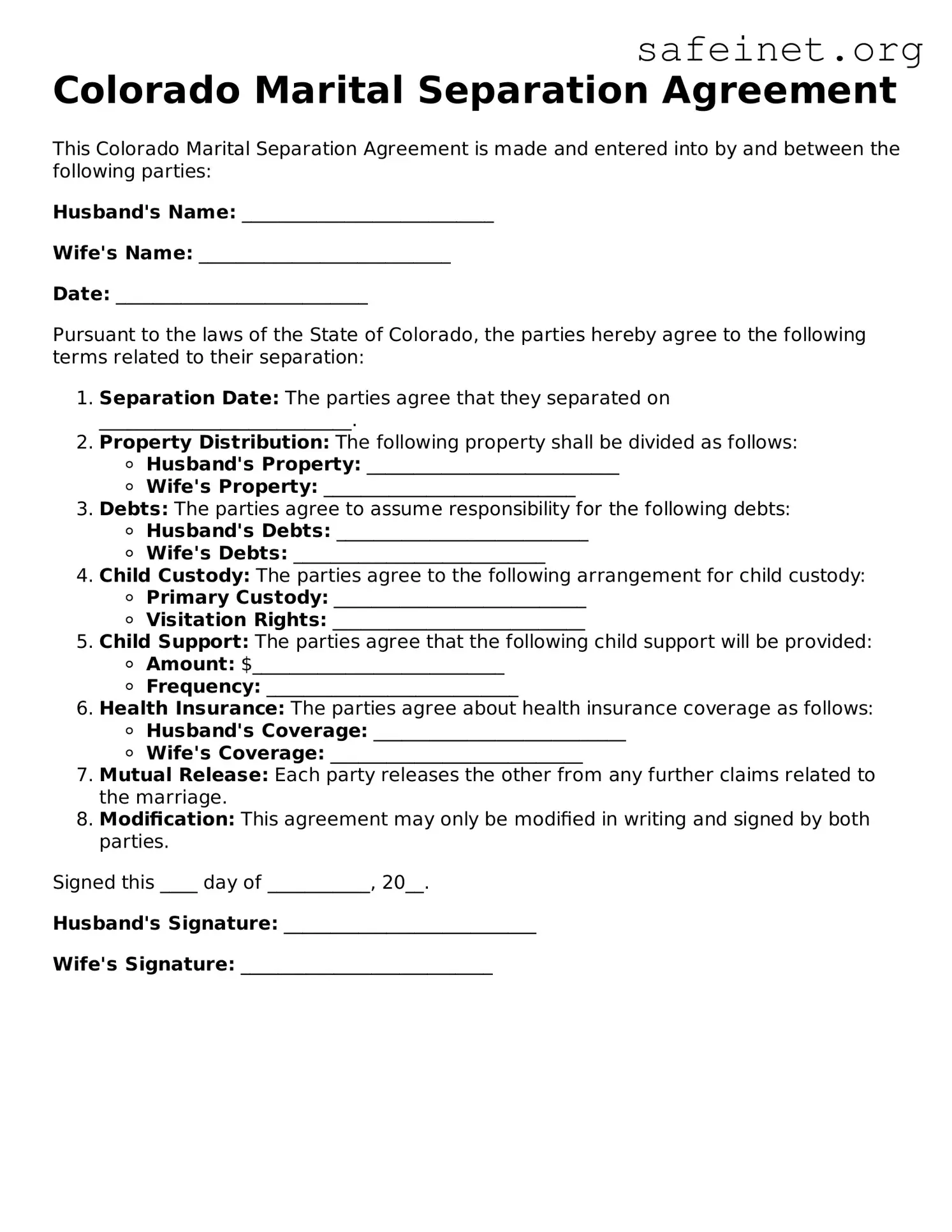The Colorado Marital Separation Agreement is comparable to the Divorce Agreement. Both documents address the division of assets, debts, and responsibilities following the end of a marriage. While a divorce agreement formalizes the final dissolution of the marriage, a marital separation agreement allows couples to live apart without terminating the marriage. Issues such as custody and support are also discussed in both documents, emphasizing the need for clarity and mutual understanding as parties transition to a new phase of life.
Another similar document is the Separation Agreement. This form is often utilized when couples wish to outline the terms of their separation without immediately filing for divorce. The key similarity lies in their purpose: both documents can define child custody arrangements, spousal support amounts, and property division. Typically, the separation agreement is a temporary measure, whereas the marital separation agreement might serve as a more permanent arrangement or a precursor to divorce.
The Cohabitation Agreement shares common features with the Colorado Marital Separation Agreement, especially regarding property rights and responsibilities. Couples who live together may use this type of agreement to clarify arrangements related to shared assets, financial obligations, and potential separation scenarios. Both documents prioritize the protection of individual rights and financial interests, ensuring that all parties understand their obligations.
A Prenuptial Agreement is also similar, albeit typically created prior to marriage rather than after separation. Like the marital separation agreement, a prenuptial agreement addresses asset division and spousal support, aiming to prevent conflicts should the relationship terminate. Both documents embody foresight and planning by considering financial responsibilities and rights during uncertain times.
The Child Custody Agreement serves a parallel purpose in detailing the rights and responsibilities of parents regarding their children. Both the marital separation agreement and child custody agreement prioritize the well-being of children, establishing terms for custody, visitation, and support. Their focus on clarity and mutual consent is essential for maintaining healthy co-parenting relationships.
The Property Settlement Agreement is a close relative as well, centering on the issues of property division and debt allocation. Both documents aim to ensure a fair distribution of marital assets. However, a property settlement agreement is typically more detailed regarding specific items of property and can be executed at various points during or after a marriage, while the marital separation agreement outlines a broader framework for living arrangements and obligations.
Similar to these is the Financial Affidavit, which may be required in conjunction with a marital separation agreement. While not a separation document, it provides a comprehensive overview of an individual’s financial situation. Both aim to foster transparency and informed decision-making about support payments and property division, making financial clarity crucial for both parties as they navigate their separation.
The Parenting Plan is akin to the child custody aspect of the marital separation agreement. This document outlines specific arrangements for raising children post-separation, addressing parental responsibilities and decision-making power. Both are designed to ensure that children’s needs are met during and after the transition, reinforcing the importance of cooperation between parents in challenging times.
Finally, a Support Agreement can serve a similar function to the spousal support clause in a marital separation agreement. This document outlines the financial support one spouse will provide to the other during separation. Both types of agreements formalize financial arrangements, aiming to safeguard the financial well-being of each partner as they adjust to new living conditions and obligations.
